#england railway history
Explore tagged Tumblr posts
Text
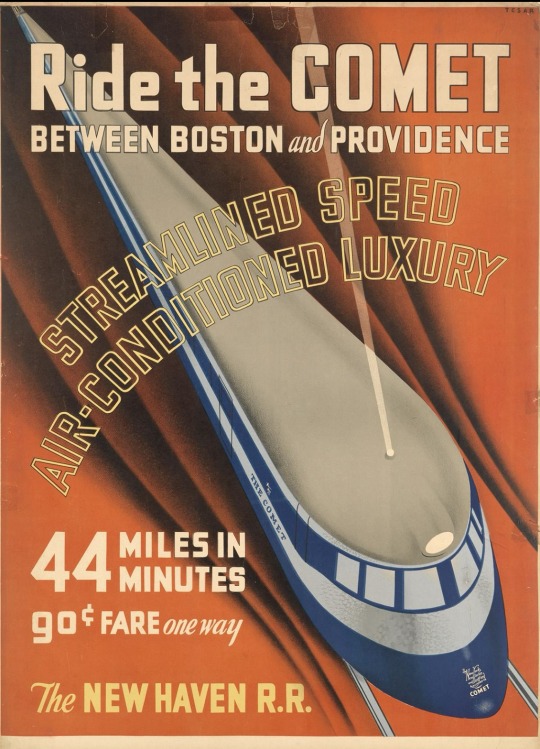
RIDE THE COMET BETWEEN BOSTON AND PROVIDENCE / THE NEW HAVEN R.R. 1935. Tesar. The Comet was in service for the New Haven Railroad from 1935 through 1951. Built by the Goodyear -Zeppelin Company, she was the first streamlined train to go into service in America's Northeast.
#trains#railway#posters#poster#vintage#design#graphic design#design grafico#design graphique#histoire#history#historia#Boston#providence#new england
224 notes
·
View notes
Text

Do you ever get lost on your way to McDonald’s and end up in West Yorkshire?
#steam locomotive#fenchurch#steam train#preservation#history#british history#steam engine#industrial history#train#railway#railroad#train station#trains#train tracks#photography#my photos#england#london#united kingdom#great britain#yorkshire#west yorkshire
46 notes
·
View notes
Text
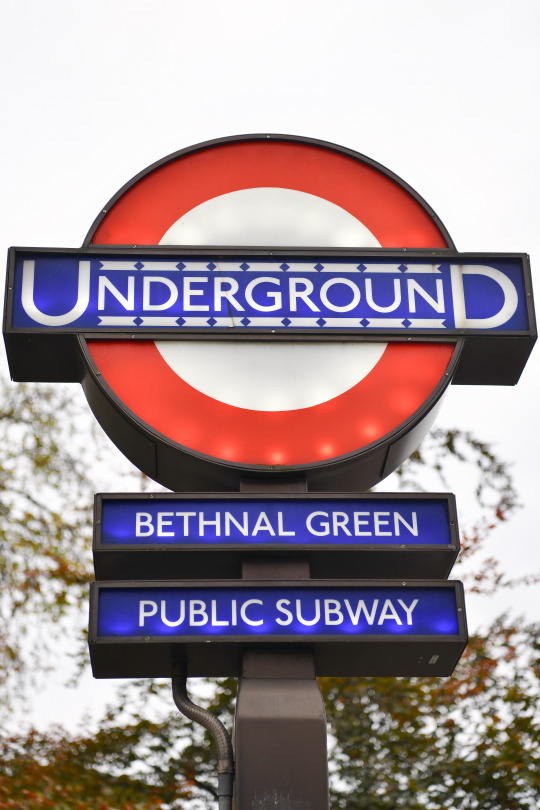
A beautiful vintage London Underground roundel sign at Bethnal Green Tube station
#London#Bethnal Green#underground#roundel#vintage#history#sign#railway#station#public subway#subway#england#uk
93 notes
·
View notes
Video
flickr
Peter Pan Railway on Clacton Pier, Essex 1959 by Old Color Images
#1950s#peter pan railway#england#britain#history#old#steel stella#fifties#essex#vintage#g4649#clacton#clacton pier#colour#flickr
4 notes
·
View notes
Text
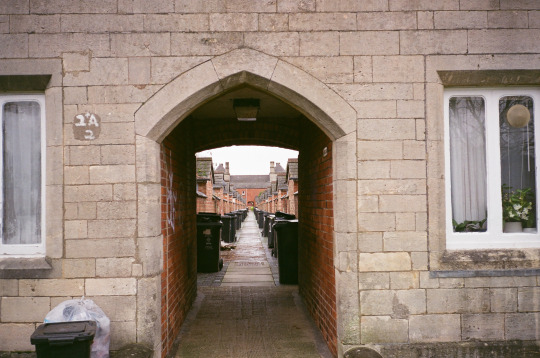
Railway Village alley, Swindon, U.K., December 2023
#railways#railway#railway village#trains#train#england#english history#britain#british history#brunel#isambard kingdom brunel#framing#bricks#houses#swindon#wiltshire
6 notes
·
View notes
Text
Unwittingly celebrated World Heritage Day last Saturday with a trip to the Swansea Model Rail Exhibition, from which I've been sorting & editing footage and uploading with the ultimate view of creating a YouTube compilation, so time now to feature the first model railway to have all footage taken now uploaded.
Box Station is an N scale model railway built by the Swansea Railway Modellers' Group, the original subject matter being a station on the Great Western Mainline between Bath and Chippenham. The nameplate of the signal box is now preserved at the National Rail Museum. Some of these videos I have slowed down from the original running speed as seen on the model last weekend so as to give a more realistic appearance.
It was also here that the Rev. W Awdry, author of the Thomas the Tank Engine books came to watch the trains passing through, as he lived nearby, and he himself relates how the stories were inspired by hearing the freight trains passing by night, banked by tank engines who would push from behind on trains too heavy to be hauled up the gradient by the main locomotive detailed for the run, and imagining the different puffing patterns of the different sized locomotives as being them talking to each other.
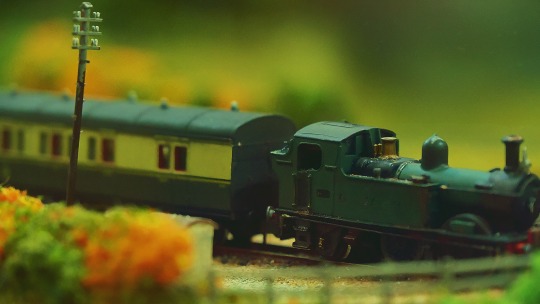
#Great Western Railway#Box#steam train#railways#Great Britain#England#railway station#steam locomotive#model railway#N scale#Rev W Awdry#Thomas the Tank Engine#World Heritage Day#model train#Great Western Main Line#railway history#express train#historical photography#digital content creator#heritage#classic train#culture#passenger train#railway culture#literature#popular culture#1:148 scale#literature inspiration
11 notes
·
View notes
Photo

Day 1691 - getting close to Chirk Viaduct
The viaduct spans the England and Wales border but, I think, this section is largely in Wales
#Wales#Cymru#Chirk#England#viaduct#border#railway#engineering#arch#arches#sheep#history#architecture#1691#UK
9 notes
·
View notes
Text
A list of all the books mentioned in Peter Doherty's journals (and in some interviews/lyrics, too)
Because I just made this list in answer to someone's question on a facebook group, I thought I may as well post it here.
-The Picture of Dorian Gray/The Ballad Of Reading Gaol/Salome/The Happy Prince/The Duchess of Padua, all by Oscar Wilde -The Thief's Journal/Our Lady Of The Flowers/Miracle Of The Rose, all by Jean Genet -A Diamond Guitar by Truman Capote -Mixed Essays by Matthew Arnold -Venus In Furs by Leopold Sacher-Masoch -The Ministry Of Fear by Graham Greene -Brighton Rock by Graham Green -A Season in Hell by Arthur Rimbaud -The Street Of Crocodiles (aka Cinnamon Shops) by Bruno Schulz -Opium: The Diary Of His Cure by Jean Cocteau -The Lost Weekend by Charles Jackson -Howl by Allen Ginsberg -Women In Love by DH Lawrence -The Tempest by William Shakespeare -Trilby by George du Maurier -The Vision Of Jean Genet by Richard Coe -"Literature And The Crisis" by Isaiah Berlin -Le Cid by Pierre Corneille -The Paris Peasant by Louis Aragon -Junky by William S Burroughs -Absolute Beginners by Colin MacInnes -Futz by Rochelle Owens -They Shoot Horses Don't They? by Horace McCoy -"An Inquiry On Love" by La revolution surrealiste magazine -Idea by Michael Drayton -"The Nymph's Reply to The Shepherd" by Sir Walter Raleigh -Hamlet by William Shakespeare -The Silver Shilling/The Old Church Bell/The Snail And The Rose Tree all by Hans Christian Andersen -120 Days Of Sodom by Marquis de Sade -Letters To A Young Poet by Rainer Maria Rilke -Poetics Of Space by Gaston Bachelard -In Favor Of The Sensitive Man and Other Essays by Anais Nin -La Batarde by Violette LeDuc -Lolita by Vladimir Nabokov -Intimate Journals by Charles Baudelaire -Juno And The Paycock by Sean O'Casey -England Is Mine by Michael Bracewell -"The Prelude" by William Wordsworth -Noise: The Political Economy of Music by Jacques Atalli -"Elm" by Sylvia Plath -"I am pleased with my sight..." by Rumi -She Stoops To Conquer by Oliver Goldsmith -Amphitryon by John Dryden -Oscar Wilde by Richard Ellman -The Song Of The South by James Rennell Rodd -In Her Praise by Robert Graves -"For That He Looked Not Upon Her" by George Gascoigne -"Order And Disorder" by Lucy Hutchinson -Man Crazy by Joyce Carol Oates -A Pictorial History Of Sex In The Movies by Jeremy Pascall and Clyde Jeavons -Anarchy State & Utopia by Robert Nozick -"Limbo" by Samuel Taylor Coleridge -Men In Love: Masculinity and Sexuality in the Eighteenth Century by George Haggerty
[arbitrary line break because tumble hates lists apparently]
-Crime And Punishment by Fyodor Dostoevsky -Innocent When You Dream: the Tom Waits Reader -"Identity Card" by Mahmoud Darwish -Ulysses by James Joyce -The Four Quartets poems by TS Eliot -Julius Caesar by William Shakespeare -A'Rebours/Against The Grain by Joris-Karl Huysmans -Prisoner Of Love by Jean Genet -Down And Out In Paris And London by George Orwell -The Man With The Golden Arm by Nelson Algren -Revolutionary Road by Richard Yates -"Epitaph To A Dog" by Lord Byron -Cocaine Nights by JG Ballard -"Not By Bread Alone" by James Terry White -Anecdotes Of The Late Samuel Johnson by Hester Thrale -"The Owl And The Pussycat" by Edward Lear -"Chevaux de bois" by Paul Verlaine -A Strong Song Tows Us: The Life of Basil Bunting by Richard Burton -Don Quixote by Miguel de Cervantes -The Divine Comedy by Dante Alighieri -The Jungle Book by Rudyard Kipling -The Man Who Would Be King by Rudyard Kipling -Ask The Dust by John Frante -On The Trans-Siberian Railways by Blaise Cendrars -The 39 Steps by John Buchan -The Overcoat by Nikolai Gogol -The Government Inspector by Nikolai Gogol -The Iliad by Homer -Heart Of Darkness by Joseph Conrad -The Volunteer by Shane O'Doherty -Twenty Love Poems and A Song Of Despair by Pablo Neruda -"May Banners" by Arthur Rimbaud -Literary Outlaw: The life and times of William S Burroughs by Ted Morgan -The Penguin Dorothy Parker -Smoke by William Faulkner -Hero And Leander by Christopher Marlowe -My Lady Nicotine by JM Barrie -All I Ever Wrote by Ronnie Barker -The Libertine by Stephen Jeffreys -On Murder Considered As One Of The Fine Arts by Thomas de Quincey -The Void Ratio by Shane Levene and Karolina Urbaniak -The Remains Of The Day by Kazuo Ishiguro -Dead Fingers Talk by William S Burroughs -The England's Dreaming Tapes by Jon Savage -London Underworld by Henry Mayhew
112 notes
·
View notes
Text
WAKE UP ITS HAMILTON TIME (hamilton pt 1)
everyone thank richard for getting me to put all my knowledge about alexander hamilton in one place. if you're at all new or confused, @thereallvrb0y once asked me 3 years ago to tell him everything about every historical figure i can, and since then i have been doing that. now we are onto the last one on the list he gave me, and studying hamilton is literally my life's work, so here it is. on tumblr.com. for free.
my sources for this are Ron Chernow and Hamilton himself and a strange amalgamation of knowledge from different museums, documentaries, interviews with historians, and other otherwise publicly accessible knowledge that i have compiled into the vast library inside my mind! you can find my notes in the link in my pinned post. let's go (this historical research is sponsored by the ghost of freddie mercury and my aunt who made me a whole pot of coffee)
Background Information
Ron Chernow loves to talk about how the island of St. Kitts and Nevis was formed, but that's not fucking important. What's important about Hamilton's birthplace is that it was positioned in the Caribbean in such a way that made it a very easily accessible port, however the coastline was pretty smooth which made it generally unideal for mooring ships.
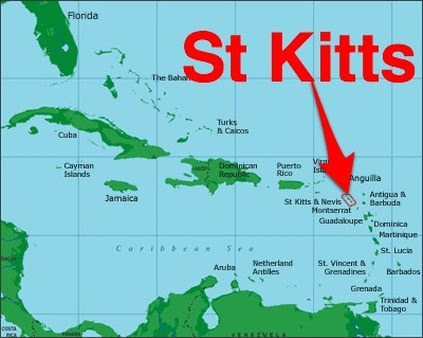
Source: The St. Kitts' Scenic Railway; Six Frigates: The Epic History of the Founding of the US Navy by Ian W. Toll, p. 112 ("Basseterre Roads was not a good natural harbor. It was little more than a dent in the otherwise smooth coastline that ran along the western side of the island. There was no pier- visitors were obliged to run their boats directly onto the beach, sometimes surfing in on waves that broke heavily as they reached the shore.")
Now, notice that St. Kitts and Nevis is, in geographic terms, to the right-ish of the Caribbean. That means when you're coming from Jolly Ole England, you might make a pit stop in St. Kitts and Nevis. So if you ignore the fact that the island has no natural harbor (at least not a good one), it might be a good economic prospect for a young merchant, right?
Well, not if that merchant is James Hamilton, because he was an idiot. And I say that lovingly, or at least more lovingly than Ron Chernow did. Ron Chernow also emphasized that St. Kitts and Nevis was filled with the 18th century version of Shameless, and also Jewish people. Ron Chernow might not hate Jewish people, but he does hate the character archetypes in Shameless. In Shameless terms, James Hamilton was like Frank Gallagher.
Disclaimer: knowledge of Shameless is not necessary to understand that being compared to a guy named Frank is not a good thing
I've already made posts about Hamilton's parents and brother (here, if you'd like to read that ig. weirdo), but I want to talk about the things that Hamilton would have learned from his parents. Later in life, Hamilton vaguely alluded to his father's failings in business being due to an excessive amount of generosity and not really understanding where he should and shouldn't spend his money. This did not by any means make Hamilton stingy with his money, or even smart, for that matter, but it did make him want to be something specific: independent.
James Hamilton's tragic flaw was his dependence on other people, whether it was his older brother or Rachel Faucette or his business partners, etc. Due to the position and order in which he was born, James was never destined to be a leader. He wasn't exceptional academically like other non-first-born-sons, such as James Madison, or dispositionally inclined to organize and inspire, like George Washington. He was just a dude, and he was a dude who was not built for 18th century society, especially not in the Caribbean. From what we can tell, James Hamilton was a gullible, moderately intelligent man with symptoms of autism and non-descript mental health issues. He was basically fucked from the get-go.
Source: Alexander Hamilton by Ron Chernow (p. 12-16); Papers of Alexander Hamilton, vol. 25, p. 89, letter to William Jackson, August 26, 1800 ("In a capacity of a merchant he went to St. Kitts, where from too generous and too easy a temper he failed in business and at length fell into indigent circumstances.")
Rachel Faucette was like James Hamilton's polar opposite. She was forced to learn how to provide for herself, not being able to rely on anyone, because that could be ripped out from under her feet at any moment, and the only thing concrete in her life was herself. She was a woman, and that was what most women had to learn at some point.
Rachel was also perfectly poised to be the clear moral guide for young Hamilton. When James Hamilton left, he basically sacrificed any reverence his son might have for him, and instituted Rachel as Hamilton's sole role model for his developmental years and i just burned the shit out of my hand with coffee.
Disclaimer: James Hamilton had nothing to do with me burning the shit out of my hand with coffee, I promise. You can't blame all your problems on deadbeat dads
If you're a Sigmund Freud fan, (good opener, I know), you're aware of the Oedipus Complex, and that's not exactly what I'm talking about, but yk. look it up. This theory proposed by Freud was only partially rejected by the psychological field (due to the fact that not everything is about wanting to fuck your mom and kill your dad, and also that's not the story of Oedipus Rex like. at all??), but the part that still rang true was that children do have a unique attachment to the opposite sex parent.
Psychological studies show that children tend to describe their opposite sex parents more favorably than same sex parents. Why? I don't know, I'm not a psychologist, I'm an 18 year old who drinks coffee like he was 5 kids to raise.
Source: "The Relation between Attachment to Opposite Sex Parents and Attachment to Romantic Partners" by Gary L. Grogan and Dr. Mary E. Pritchard, p. 10 ("However, most significant for the present inquiry were the findings that respondents described their opposite sex parents more favorably, and same sex parents more critically.")
This statistic is visible in Hamilton's descriptions of his parents, and must have been enhanced by James Hamilton's early departure in his son's life, the consequences from that which seemed constant, but also by the reputation his father had built on the island he left Hamilton on. Hamilton would grow up to see his mother not only providing for herself and her children, but also overcoming the consequences of James' actions, which provoked resentment towards his father, and admiration towards his mother. This will develop as a theme throughout his life, but we'll touch on that as he grows up. He isn't even born yet! So let's get on to that.
Source: so when I say Hamilton's description of his mother, I really mean HIS son's, but JCH most likely got this description from his father, Life of Alexander Hamilton by John Church Hamilton, vol. 1, pg. 42 ("...a woman of superior intellect, elevated sentiment, and unusual grace of person and manner. To her he was indebted for his genius."); for the sake of my reliability and reputation, I'll include JCH's description of his grandfather for comparison, Intimate Life of Alexander Hamilton by John Church Hamilton, p. 13 ("Hamilton's father does not appear to have been successful in any pursuit, but in many ways was a great deal of a dreamer, and something of a student, whose chief happiness seemed to be in the society of his beautiful and talented wife, who was in every way intellectually his superior.")
Early Life
Alexander Hamilton was born ginger on January 11, 1755, and I don't entertain the argument that he was born in 1757 because I'm not an anarchist and I believe society has laws (I'm actually lying, I'll talk about the birth year debate in the college section). Hamilton was not, however, born black or Jewish. He was also, potentially, born not James Hamilton's son.
"Wh- WHAT?! *cries*" I hear you say, and I know, it's shocking information, but yes. First off, Hamilton was not black in any percentage more than the Pillsbury dough boy is black. This theory comes from the fact that Rachel Faucette was a lower class woman and therefore we have no proof that she WASN'T partially black. I don't even have to dispute that for anyone with a gram of critical thinking skills to see that that isn't a valid historical hypothesis.
The Jewish thing has a little more merit to it, and there's a whole book about it that I haven't read. There is some evidence to suggest that Rachel Faucette's ex husband, Johann Lavien, could have been a secret Jewish person, and possibly caused Rachel herself to convert, and she tried to pass on that to Hamilton by having a Jewish woman educate him when he was a toddler (that last part is a true fact, and is the earliest piece of information we have about Hamilton's education). If this is true, (and it's nearly impossible to prove true or false because well if Lavien was a secret Jew, it was a secret), it did not impact Hamilton's religious beliefs in any way, and he identified as a Christian throughout his entire life.
We'll do a paternity test on Hamilton later, just hang tight. See, this is how I get you, I say something controversial, and then I don't talk about it until 16 paragraphs later.
Source: Alexander Hamilton by Ron Chernow, p. 9 ("A persistent mythology in the Caribbean asserts that Rachel was partly black, making Alexander Hamilton a quadroon or an octoroon. In this obsessively race-conscious society, however, Rachel was invariably listed among the whites on local tax rolls. Her identification as someone of mixed race has no basis in verifiable fact. (See pages 734-35 [this is in Chernow's Acknowledgments, and he just talks about how he used a paper trail to come to this conclusion, and thought genetic research would only confuse the evidence. He also discusses that there is a small chance that Hamilton fathered a black child named William Hamilton, but I can go ahead and tell you that's false due to the fact that Hamilton had just arrived in America when William was born -HWS]) The folklore that Hamilton was mulatto probably arose from the incontestable truth that many, if not most, illegitimate children in the West Indies bore mixed blood."); Life of Alexander Hamilton by John Church Hamilton, vol. 1, p. 42 ("...rarely as he alluded to his personal history, he mentioned with a smile his having been taught to repeat the Decalogue in Hebrew, at the school of a Jewess, when so small that he was placed standing by her side upon a table); Ibid., vol. 7, p. 710-11; Papers of Alexander Hamilton, vol. 26, p. 774, "Comments on Jews"
Hamilton's education began with his mother, who is almost definitely the person who made him fluent in French by the time he came to America. Despite limited access to books (34 books in both French and English to be specific), Hamilton still studied everything he could from a young age, with an early love for learning new things and proving that he was smarter than you. However, most of his education was in the School of Hard Knocks Community College, which was amply provided by the environment around him.
In the height of the British Empire, the Caribbean was essentially a social prison for anyone who broke the moral laws of the colonial, Eurocentric society of the time. This included pirates, prostitutes, drunks, thieves, and basically anyone who didn't fit the mold for a member of high society and/or someone who could serve high society and their lives of luxury. Hamilton, by birth, was one of these people.
Hamilton's father moved the family to St. Croix right before he left, which was a dramatic shift from Hamilton's life on St. Kitts and Nevis. In St. Croix, everyone knew Hamilton's mother as the disgraced ex-wife of Johann Lavien, and therefore knew her two sons as "whore-children", which was a word usually given to illegitimate children. Here, Hamilton was roped in with the degenerates of society, and it was practically said directly to him that he was destined to be unholy, unclean, worthless, and disgusting. Could you believe that this would have an impact on his mental health?
Along with seeing the poor lifestyles of the inhabitants of the Caribbean, Hamilton also saw glimpses into a very different world: ~rich people~. There were few rich white people on the islands, and they owned vast amounts of enslaved people, with the black to white ratio being 8:1 in the Caribbean. These enslaved people were forced to live in horrible conditions, and Hamilton saw it everywhere- his mother owned three people, but they were often rented out to garner profit for the white family, rather than working a plantation as others in the Caribbean did. Violence towards enslaved black people was only part of the violence young Hamilton witnessed in the Caribbean, some of which came in the form of dueling *insert ominous music*
Source: Alexander Hamilton by Ron Chernow, p. 18 ("To the extent that dueling later entranced Hamilton to an unhealthy degree, this fascination may have originated in the most fabled event in Nevis in the 1750s [a duel between two men where one of them was killed"); Ibid., p. 19; Ibid., p. 23-24
James Hamilton abandoned the family in 1765, and the reasons he did so are debated, but most likely are due to debt. However, there's another possibility that I've alluded to before: Hamilton's paternity.

So, remember, Rachel Faucette is not a perfect angel, and she also didn't particularly care for matrimony. There is a chance that she was with other men besides Hamilton and Lavien, and though we have no evidence that she was, there is an interesting character I'd like to throw into the mix.
Thomas Stevens, a moderately rich guy, was a merchant who lived on King Street in Charleston, St. Croix, with his wife Ann and his son Edward, who was born a year before Alexander Hamilton. Thomas Stevens was a very generous guy, and Edward Stevens would later be lifelong friends with Alexander Hamilton. And uh. They looked almost exactly the same. I really wish we had a portrait of Edward Stevens, but according to literally everyone, it was hard to tell the difference between him and Hamilton. Now, statistically, we all have some kind of doppelganger out there, but like what are the chances that they grew up down the street from each other and their parents had suspiciously close connections? Now, I'm not saying that Hamilton should have been Alexander Stevens, I think that's pretty irrelevant, but it is possible that Thomas Stevens... you... ARE THE FATHER!!!
Source: Alexander Hamilton by Ron Chernow, p. 27-28 ("Nevertheless, in the absence of direct proof, the notion that Alexander was the biological son of Thomas Stevens instead of James Hamilton would clarify many oddities in Hamilton's biography.")
The Hamiltons' life post-dad-desertion was actually somewhat comfortable due to Rachel's kickassery. She established a little store for a source of income, relocated a couple times, rented out the enslaved people (as one does, i guess, that's such a wild phrase), and kept a pet goat for milk and cheese and idk soap or whatever else people make with goat milk. Her sons would help out, possibly providing an origin for Hamilton's incessant need to be productive at all times without resting. At times, they were supported by his aunt Ann Lytton Mitchell, who he would remain loyal to until his death. During this time, as he was old enough to understand what his father did, is probably when his fiercely loyal, chivalrous and family-driven attitude developed.
Source: Alexander Hamilton by Ron Chernow, p. 22-23; Ibid., p. 28
I'm so hopped up on caffeine I could do a triathalon.
Hamilton and his mother were both afflicted by a strange and unspecified illness in the winter of 1768. The primary symptom was a severe fever, and they were treated with purgatives, medicinal herbs, and bloodletting. Nothing helped, and Rachel died at 9 pm on February 19. Hamilton miraculously survived.
Immediately, Hamilton and his brother James had everything they owned taken away, indebted by bills charged against them by local debtors. Their half brother inherited whatever else belonged to their mother, which brought up the marital scandal all over again, beginning a legal battle that lasted for around a year. In the end, the two Hamilton brothers were left with two things: jack shit and fuck all.
Custody of the two boys was appointed to their cousin, Peter Lytton. In my notes, I described him as "white trash" and "insane", including the quotes, so idk who said that. Peter Lytton lived with his black mistress and their illegitimate child. He killed himself on July 6, 1769, and what's strange about that is that we don't know if he shot or stabbed himself. I don't know who got confused about the difference between a knife and a gun, but that isn't my problem.
To make a bad situation worse, Peter Lytton didn't leave the boys anything in his will, and neither did his father, who did "his best" to help. His best could have been even just mentioning the name Hamilton in his will, but whatever, I guess.
These events held very important lessons for the young Alexander: 1) nothing lasts forever; 2) everyone dies; 3) the legal system is terrible; 4) rich people hate you; and, most importantly, 5) the only way out was up.
Source: Alexander Hamilton by Ron Chernow, p. 22-27
On His Own
This marked a split between Hamilton and his older brother, but this didn't seem to affect him as much as what happened with his parents- possibly because he wasn't biologically his brother, but I don't really care about that. What's more important is that Hamilton was almost entirely on his own, with inconsistent housing, so he couldn't always rely on the Stevenses. He was in a very similar situation that his mother was in at one time not long ago: alone and self reliant.
Hamilton was already working for the mercantile company, Beekman and Cruger. This company was later renamed, so I'll just say that Hamilton worked for Cruger, who was a business man with ties to New York. Hamilton worked as a clerk at this import-export business, giving him the responsibility to monitor intake and outtake as well as the organization of papers and just generally keeping everything in line. Due to the international relevance that was St. Croix, Hamilton often used French in his business dealings. Here, Hamilton perfected his handwriting into that elegant mess we know and can't read, picked up information on shipping/navigation, and learned his famously proficient math skills, particularly in relation to finance and economics.
Hamilton's famously maniacal work ethic began here, but so did his yearning for military valor. The first piece of personal correspondence we have from Hamilton is a letter to bestie Edward Stevens, and was made very famous from The Musical.

"Im confident, Ned that my Youth excludes me from any hopes of immediate Preferment nor do I desire it, but I mean to prepare the way for futurity. Im no Philosopher you see and may be jusly said to Build Castles in the Air. My Folly makes me ashamd and beg youll Conceal it, yet Neddy we have seen such Schemes successfull when the Projector is Constant I shall Conclude saying I wish there was a War. I am Dr Edward Yours Alex Hamilton (sic)"
Source: Alexander Hamilton by Ron Chernow, p. 29-30; Alexander Hamilton to Edward Stevens, November 11, 1769, St. Croix; Library of Congress, Image 13 of Alexander Hamilton Papers: General Correspondence, 1734-1804; 1734-1772
When Cruger left St. Croix for New York due to medical reasons in 1771, he left 16 year old Alexander Hamilton in charge of his primary source of income. And you're probably thinking that's a stupid idea. Because it is.
BUT ITS ALEXANDER HAMILTON. SO IT WAS FINE??? Well, fine for everyone besides the captain of the HMS Thunderbolt.
The Thunderbolt pulled into St. Croix's busy harbor after crossing the ocean and manned by a veteran captain, however Hamilton was not satisfied with the outfitting of the ship nor the quality of the goods that had been transported.
"Reflect continually on the unfortunate voyage you have just made and endeavor to make up for the considerable loss therefrom accruing to your owners." -Alexander Hamilton to Captain Newton, February 1, 1772
You can really see Hamilton's "I'm better than you and I know it" attitude shining through, made more shocking than ever than the fact that he was SIXTEEN YEARS OLD and talking to a man who was LITERALLY TWICE HIS AGE. The only reason he didn't lose his job over this is because he was right. The mules that had been transported were in such poor health, Hamilton had to pull strings to get them sold, and the wood was too waterlogged to be sold on the open market, so he sold it to a private buyer who was able to find something to do with them. He showed quick thinking, confidence in his abilities, and managerial skills. It was these skills that would later appeal to George Washington, not his financial abilities, and led to his most important appointment.
Source: Papers of Alexander Hamilton, vol. 1, p. 23, letter to Tileman Cruger, February 1, 1772 ("It would be undoubtedly a great pity that such a vessel [the Thunderbolt] should be lost for the want of them [cannons]."); Ibid., p.4, letter to Captain Newton, February 1, 1772; Alexander Hamilton: A Biography by Forrest McDonald, p. 128 ("Taken aback, Washington replied, 'I always knew Colonel Hamilton to be a man of superior talents, but never supposed that he had any knowledge of finance.")
Cruger's firm also engaged in the Atlantic slave trade, as did the majority of trading firms in the Caribbean and the American south. It was this exposure to the abhorrent conditions on slave ships and the violence African people faced in the triangle trade that shaped Hamilton into a vocal opponent of slavery- when it was convenient. More impactful was the fear he developed of slave revolts, as was very common in the Caribbean because of the disproportionate slave to free/black to white ratio in the islands, and this would later define his views on the French Revolution and public protest in general. He and Thomas Jefferson had this in common.
Hamilton continued studying books in his free time, and the local newspaper, the Royal Danish American Gazette, began publishing poems from an anonymous young writer- obviously it was Hamilton. His poems ranged in subjects, and aren't particularly good, but they're better than any poems I've written angrily in my journal about my evil exes, so that is to his credit.
Hamilton's poems took a religious turn, most likely traceable to the arrival of Reverend Hugh Knox, who took in Hamilton as a mentor. Clergymen were a hot commodity in the hell hole that was the Caribbean, and Knox had a lot of work on his hands, but he took a particular interest in Hamilton, specifically in getting him out of the aforementioned hell hole. He saw that Hamilton was incredibly intelligent and hard working, almost to a fault- he was probably the first person who was genuinely concerned for this dude's health over how much he worked.
Fun fact, Knox also had personal ties to the Burr family, but that is literally only a fun fact and not a sign that Burr and Hamilton were star-crossed lovers in fair Verona or whatever Chernow has deluded himself into thinking.
Source: Alexander Hamilton by Ron Chernow, p. 32-33; Ibid., p. 34
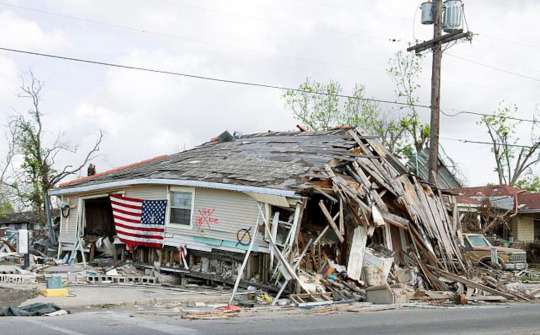
Source: National Guard Bureau, "Examining Lessons from Katrina 10 Years Later"
Then, a massive hurricane struck the Caribbean on August 1, 1772. It was incredibly damaging, causing mass destruction in St. Croix, and this is most definitely one that we in the south would evacuate for. Even my dad would evacuate for this one, and it took a lot of convincing to get him to evacuate for Katrina.
In reaction to this event, Hamilton wrote his famous letter to his father detailing and reflecting on the storm. And finally, I'm giving y'all my analysis of this letter that I keep saying I'll do. However, this post is already incredibly long, so I'm going to do it in a google doc and attach it here.
Source: Alexander Hamilton to The Royal Danish American Gazette, September 6, 1772
The letter was published to The Royal Danish American Gazette, which spread around the afflicted community. Knox's congregation gathered money for the anonymous young author (now not very anonymous) to sail to the American mainland for his education. Originally, Hamilton went to study medicine, due to the high demand for doctors in the Caribbean (his knowledge of anatomy would remain helpful throughout his life). However, at some point he decided he would not be going back to the Caribbean, and switched his focus to law, but we'll discuss that more in part two.
Source: Alexander Hamilton by Ron Chernow, p. 37-40
Well, there's part one. I did all of this in one day because um. I don't know, but it is now one in the morning and i have to wake up earlier than normal. so that's fun. i hope y'all enjoyed. shout out to my mom for proofreading half of this, and shout out to my aunt who gave me coffee, that was a horrible idea. i'll be back with part two at some point, which will probably be more concise because hamilton's childhood in the caribbean is where most of the theories are, so yeah. love y'all.
#alexander hamilton#history#amrev#american history#american revolution#hamilton#18th century#caribbean history#long post#research#heavy breathing#this is my career guys#do it for richie 💪#amrev history#i also watched like half of a chris chan documentary during this#and an entire markiplier playthrough#this is my spring break#publius originals
57 notes
·
View notes
Text
HSR THEORIES - PENACONY ANALYSIS
I guess I'm late to the game, but I'm normally a lore gremlin for Xianzhou lore, not Penacony lore. Anyways, don't expect something very elaborate, but you'll be able to find :
Reflection on the period based on history (Penal Colony)
Reflection on the period based on fashion (NPC in trailers)
Reflection on the period based on architecture (Art Deco)
Reflection on the period based on cultural shift (Railway Mania, Department Stores)
Reflection on lore based on Literature (Jules Vernes, Herman Melville)
Reflection on lore based on Philosophy (Idealism, Utilitarianism, Transcendental Idealism)
Everything under the cut as always since I tend to babble.
The name "Penacony" possibly comes from the phrase "penal colony".
I'm certainly not the first to make the connection, but "Penal Colony" inevitably brings to mind Australia. This idea of "Space Australia" is also reinforced by the names for the characters we know at the moment, with a very clear English etymology : Sunday, Robin, Gallagher, Firefly.
The use of Australia as a "penal colony" by England took place after the American War of Independence, so we start with a period around 1780 to ~1870.
youtube
We didn't get to see a lot of NPC outfits in this very short clip, but what little there is could actually correspond to a period like this. However, we had a little more hints in Honkai Star Rail - Penacony Trailer | Game Awards 2023, where we see Acheron at the reception of the Reverie hotel :

This NPC in particular is interesting, because of her gloves. It's called "evening gloves" or "opera gloves". They were popular during the Napoleonic period (1800-1825) but were also very fashionable in the last two decades of the 19th century, i.e. 1880-1900 and before WWI, i.e up to 1910.
In terms of temporality, it is also important to note what concerns the architecture of Penacony.
It was noted on Reddit that the style of architecture could be reminiscent of the French Art Deco style, an architectural movement predominant in the 1910s to 1920s. Art Deco is said to have represented "luxury, glamour, exuberance, and faith in social and technological progress", so quite fitting for Penacony. Key features were : geometric/sleek designs, bold colors, luxurious materials, things that we find in the previews.
We'll have to wait to see more from Penacony, but it might be interesting to see if there is also any inspiration from the previous movement, Art Nouveau 🤔
Another architectural thing :
Look up and see the metal tracks crisscrossing the skyscrapers and the Spheroids rapidly rolling along them. They are the most visible means of transportation in this dreamscape metropolis and guide guests to each and every place around the city. [x]
This part about the Spheroids is interesting, because during this period (starting from 1825, with a peak in the 1840s), there was in France and England what we called the Railway Mania.
This is a point of interest because the Railway Mania saw the the arrival of the railroads in Paris. When it happened, this caused another major cultural shift : the rise of Department Stores. There is even a well-known french novel on the subject, called Au Bonheur des Dames (The Ladies' Delight) by Emile Zola.

The end of the 19th century is also the period of birth of modern advertising and given the number of things that we see plastered all over Penacony, I think I can say that we are on the right track/period.
So, in terms of rough "era", we can go from 1780 to ~1920, so mostly the 19th century (1800-1900).
Speaking of period culture and Penacony in general, we currently have a Relic Set which I will use for the rest of the post: Penacony's Dream-Seeking Tracks
Opening a window no longer show a view of the stars in the deep sky, but of the city's shifting streams of light and shadows, holding up the constant echoes of giant clocks and theaters.
Okay, let's start with some details that I only noticed because I come from a literary studies background. I'm not going to lie to you, it's far-fetched, but stay with me, I promise it's interesting.
Giant clocks and theaters made me think "steampunk" works, whose setting are often set in an alternative history of the Victorian era (~1837 to 1900, so right in our period). One of the pioneering writers of the genre, “proto-steampunk” so to speak, is Jules Vernes, considered one of the "father of science fiction".
Remember Spheroids ? : "Spheroids are regarded as both vehicles and as toys in the land of dreams. However, few remember that the Spheroids are actually imprisonment cages — the vehicle towards dreams are tools originally used for locking up prisoners."
One of Jules Vernes' best-known novels is Twenty Thousand Leagues Under the Seas, a science-fiction aventure novel the majority of which takes place aboard the Nautilus, a submarine belonging to Captain Nemo. And interesting thing, "he also tells his new passengers that his secret existence means he cannot let them leave — they must remain on board permanently" ; They are prisoners in the Nautilus.
On another point, Jules Vernes is also considered as having had a strong influence on the surrealist movement "in which artists depicted unnerving, illogical scenes and developed techniques to allow the unconscious mind to express itself. Its aim was, according to leader André Breton, to "resolve the previously contradictory conditions of dream and reality into an absolute reality, a super-reality", or surreality"." Quite fitting for our dream planet.
For the next one... Well. I have no excuse for this one, it's even more far-fetched. But so, we remain in the literary universe.
The water from the spring turn into a giant whale and swim through the halls.
Giant whale made me think of one thing almost immediately : Moby Dick, by Herman Mellville, published in 1851 (once again in our era of interest). Moby Dick is a "sea novel" centered around the figure of the hunt of a whale. It's main themes are the limits of knowledge, fate and free will, nature and man, race, fellowship, and enslavement, madness and religion [x].
I wont copy and paste the whole shtick but I send you check again The Family description from the Data Bank.
With that, we're done with literature... so it's time to move on to something else wonderful and terrible, the greatest enemy of my high school years (when you have to do it for 8 hours a week, it quickly becomes tiring), I named: PHILOSOPHY.
For a transcendent experience, for an inspirational excitement, for the soothing of worries and wounds — guests of the highest caliber come to surrender their pain in exchange for peace and tranquility
I'm not going to dwell on that for too long, quite honestly. I'll just... put that here for you to do whatever the fuck you want with it.
Idealism : "Idealism in philosophy, also known as philosophical idealism or metaphysical idealism, is the set of metaphysical perspectives asserting that, most fundamentally, reality is equivalent to mind, spirit, or consciousness; that reality is entirely a mental construct; or that ideas are the highest form of reality or have the greatest claim to being considered "real"
At some unknown point in time, the small cells cut off access to reality, but people's consciousnesses became linked in dreams. In the midnight bell, that shared dream seemed so real, reflecting the sheer hypocrisy of reality.
Utilitarianism : "a family of normative ethical theories that prescribe actions that maximize happiness and well-being for the affected individuals. In other words, utilitarian ideas encourage actions that ensure the greatest good for the greatest number."
Those who follow the "Harmony" Path admire understanding, support, and cooperative behavior.
In addition to all previously "said", one of the greatest thinkers of the time, who is also the one at the origin of the definition of transcendent, is Immanuel Kant. His best known work is Critique of Pure Reason (1781), with which "he aims to reach a decision about "the possibility or impossibility of metaphysics".
Metaphysics "is the branch of philosophy that studies the fundamental nature of reality. This includes the first principles of: being or existence, identity, change, space and time, cause and effect, necessity, actuality, and possibility."
This work was the founding work of a philosophical doctrine known under the name of Transcendental Idealism. I'll spare you the convoluted explanations but look at that :
The scenery gradually becomes more and more incredulous, and the senses feel as if one has been lifted by silk. [...] The guests finally realize that they were never awake, but are instead witnessing Penacony's true nature in a dream — a place where time stops in a neverending dreamscape.
"Kant means that his philosophical approach to knowledge transcends mere consideration of sensory evidence and requires an understanding of the mind's innate modes of processing that sensory evidence".
"Kant outlines how space and time are pure forms of human intuition contributed by our own faculty of sensibility. Space and time do not have an existence "outside" of us, but are the "subjective" forms of our sensibility".
77 notes
·
View notes
Text

Life’s a Beach
#locomotive#beachy head#Steam locomotive#steam train#industrial#history#industrial history#photography#steam engine#England#Great Britain#steam history#bluebell railway#cotswolds
14 notes
·
View notes
Photo

The Impact of the British Industrial Revolution
The consequences of the British Industrial Revolution (1760-1840) were many, varied, and long-lasting. Working life in rural and urban settings was changed forever by the inventions of new machines, the spread of factories, and the decline of traditional occupations. Developments in transportation and communications meant life in the post-industrial world was more exciting and faster, with people more connected than ever before. Consumer goods became more affordable to more people, and there were more jobs for a booming population. The price to pay for progress was often a working life that was noisy, repetitive, and dangerous, while cities grew to become overcrowded, polluted, and crime-ridden.
The impact of the Industrial Revolution included:
Many new machines were invented that could do things much faster than previously or could perform entirely new tasks.
Steam power was cheaper, more reliable, and faster than more traditional power sources.
Large factories were established, creating jobs and a boom in cotton textile production, in particular.
Large engineering projects became possible like iron bridges and viaducts.
Traditional industries like hand weaving and businesses connected to stagecoaches went into terminal decline.
The cost of food and consumer goods was reduced as items were mass-produced and transportation costs decreased.
Better tools became available for manufacturers and farmers.
The coal, iron, and steel industries boomed to provide fuel and raw materials for machines to work.
The canal system was expanded but then declined.
Urbanisation accelerated as labour became concentrated around factories in towns and cities.
Cheap train travel became a possibility for all.
Demand for skilled labour, especially in textiles, decreased.
Demand for unskilled labour to operate machines and work on the railways increased.
The use of child and women labour increased.
Worker safety declined and was not reversed until the 1830s.
Trade unions were formed to protect workers' rights.
The success of mechanisation led to other countries experiencing their own industrial revolutions.
Coal Mining
Mining of tin and coal has a long history in Britain, but the arrival of the Industrial Revolution saw unprecedented activity underground to find the fuel to feed the steam-powered machines that came to dominate industry and transport. The steam-powered pump was invented to drain mines in 1712. This allowed deeper mining and so greatly increased coal production. The Watt steam engine, patented in 1769, allowed steam power to be harnessed for almost anything, and as the steam engines ran on coal, so the mining industry boomed as mechanisation swept across industries of all kinds. This phenomenon only increased with the spread of the railways from 1825 and the increase in steam-powered ships from the 1840s. Coal gas, meanwhile, was used for lighting homes and streets from 1812, and as a source of heat for private homes and cookers. Coke, that is burnt coal, was used as a fuel in the iron and steel industries, and so the demand for coal kept on growing as the Industrial Revolution rolled on.
There were four principal coal mining areas: South Wales, southern Scotland, Lancashire, and Northumberland. To get the coal to where it was needed, Britain's canal system was significantly expanded as transportation by canal was 50% cheaper than using roads. By 1830, "England and Wales had 3,876 miles in 1760" (Horn, 17). Britain produced annually just 2.5 to 3 million tons of coal in 1700, but by 1900, this figure had rocketed to 224 million tons.
Continue reading...
24 notes
·
View notes
Text
The Valley of Fear: Sherlock Holmes Discourses
Camberwell is an area 2 3/4 miles SE of Charing Cross, being in Surrey until the 1889 creation of the London County Council. As a rapidly expanding area, it would have been hard to find trace 'Porlock'.
The French franc throughout its history from 1795 (when it replaced the livre) to 2002 (France completing its move to the euro) had several periods of rapid inflation and government devaluation, resulting in some exchange rates with other currencies that were at joke level. In 1960, the currency was revalued with the "new franc" being equivalent to 100 of the old ones, but the franc was one of the weaker currencies in Europe in the 1990s, although not quite as bad as the Italian or Turkish lira.
Jonathan Wild was a man who ran a major criminal empire who posing as a thief-taker:
The wage for the Prime Minister was £5,000 a year from 1830 to 1930. Sir Keir Starmer is entitled to £172,153, but doesn't take all of it:
Regular MPs were not paid at all until 1911; which basically limited the Commons to those were already wealthy or had support from a trade union.
Trespass is not in itself a criminal offence in England, merely a civil wrong, but picking a lock to get into a place would make it a criminal matter.
Deutsche Bank, the largest bank in Germany, was formed in 1870 - it today has two of Frankfurt-am-Main's 20 skyscrapers (Germany has 21 in total).
London Victoria is connected to Sussex by the Oxted line, then part of the London, Brighton and South Coast Railway. It is today in the Southern network. I will cover more on this later.
"Milk train" was a term for a very early train, these would carry churns of milk in the guard's van and/or (I guess) in dedicated freight wagons, as well as passenger loads. Milk would move from the 1930s onwards to being carried in dedicated tanks, until road transport replaced them, with the last milk trains running in 1981.
While the Pinkerton Detective Agency had adopted an eye as its logo by this time - after an operation to escort Abraham Lincoln to his inauguration where the world's first female detective, Kate Warne, likely pulled an all-nighter - the use of the term "private eye" to refer to someone like Holmes originates in the 1930s. Here it is referring to the fact the message is for Inspector MacDonald's personal reading.
18 notes
·
View notes
Text

1918 A woman railway worker operating the signals in a signal box on a siding on the Great Central Railway, Birmingham, England. From Mikki's 1900-1919 History Resource, FB.
137 notes
·
View notes
Text
youtube
Finally released my stock footage compilation from last year's model railway exhibition in Swansea, featuring some fantastic models including Box, Overlord, and Allenby, with all imagery downloadable for reuse under the Creative Commons Attribution License, crediting me as the author.
#Swansea#model railway#photography#history#heritage#Great Britain#steam train#World War II#British Railways#diesel locomotive#4DD#Southern Region#London#commuter train#YouTube#digital content#landscape#1950s#England#Wales#scale model#Creative Commons#stock footage#update#Creative Commons Attribution#WWII#Operation Overlord#video#stock photography#Youtube
0 notes
Text
hey do you guys know about
the history of the bus?
they started as an "omnibus" a horse drawn two stop back and forth along a pre determined route! then they added more stops! they messed with the size of the omnibus and the number of horses until they hit the right size for the route!

(blease note these are intra-city buses, stagecoaches would go outside the city to specific locations and they generally required a reserved seat)
they basically SLAPPED A ROOF AREA to get roof passengers! double deck omnibuses!
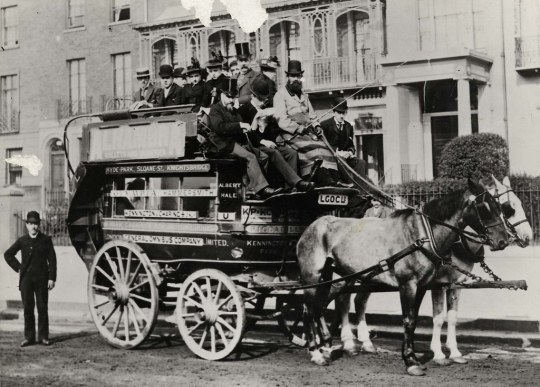
then we get MOTOR OMNIBUSES! as the petrol engine is getting better! for context the first motor omnibus ran in 1899 - this is 13 years after the patent for the first petrol engine car (1886), 74 years after the first steam public railway in england (1825) and 36 years after the london underground was opened (1863). by 1911 there were no horse-drawn omnibuses owned by the london general omnibus company!
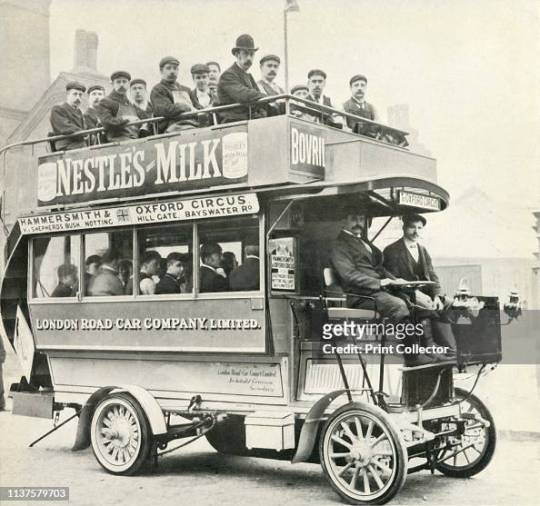
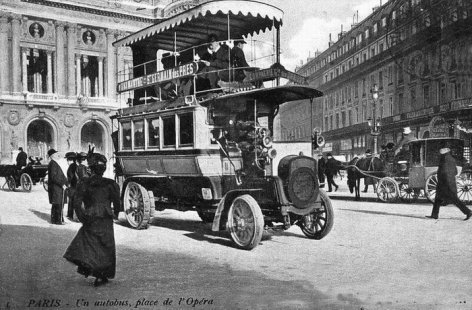
AND THEY WERE EVERYWHERE! (please look at the number of BUSES and INDIVIDUAL CARRIAGES [usually hired cabs] and PEDESTRIANS)
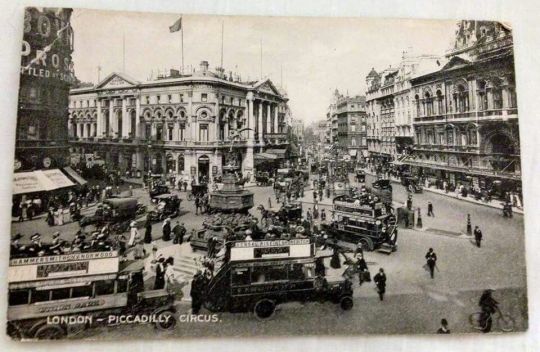
a lot of places switched to electric trams in the 1910s, public transport became reliant on the comparatively more efficient light rail or tram systems. the trams gave way to electric buses in london in 1930! they were much less dangerous than trams as people did not have to walk right into traffic to get on em

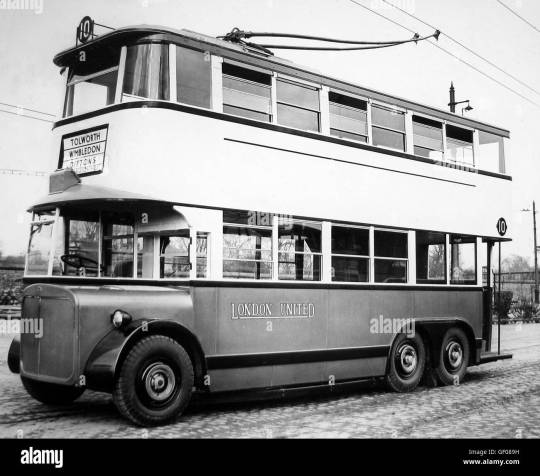
then as engines got more efficient trolleybuses were switched with petrol engine buses
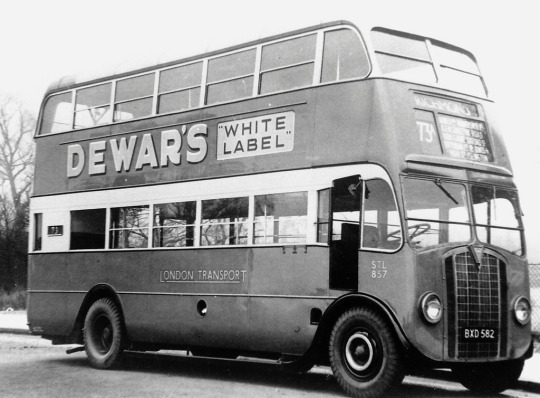

then in the 1950s more people got cars and they began dominating the streets and creating.. traffic and. traffic laws. and stuff.
thanks for coming to my whistlestop bus lesson hope u have a brilliant day
#i went to a transport museum and I've been thinking about it CONSTANTLY lfjsjdhsj#this is london perspective btw since it was... the london transport museum#long post#it was like. in the 1910s a battle between buses and trams/light rail systems#and buses tended to be safer bc of the nature of traffic laws and pedestrians back then#so london prioritised buses. but people were going on the underground too bc it was muuuch faster lol#anyway. transport! fascinating#and short-stagecoaches existed before buses did for intra-city travel but they tended to be by hosuehold rather than location#also expensive. well omibuses were expensive too. this is very high level fldbfjdjfj
77 notes
·
View notes